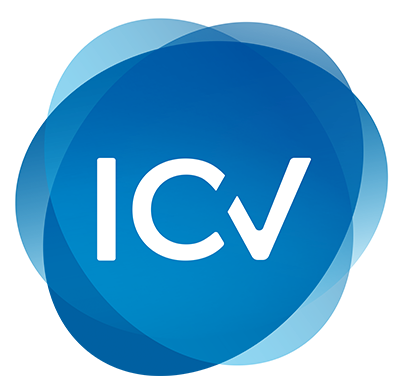ENG: Clear rules, strong leadership: Innovation is more than creativity
Clear rules, strong leadership: Innovation is more than creativity
What does it actually take for innovation to succeed in companies? Siegfried Gänßlen knows. After all, the Executive Advisor and former CEO of Hansgrohe SE is also a member of the ICV (International Association of Controllers) expert work group Innovation Management. He worked out the current white paper. “Innovation: Leap into the Future - Steps to Successfully Building an Innovation Culture” (so far in German) deals with the framework conditions and internal structures that companies need to create the necessary space for innovations.
The white paper appears in the current issue of the Controller Magazine and can also be read online since August on the ICV website (https: //www.icv- controlling.com/de/controlling-wissen.html). The ICV Communications Team spoke to Siegfried Gänßlen beforehand: about free spaces, structures, dangers and the necessary anchoring of innovation in the company. You can read the interview with the former Chairman of the ICV in the ICV ControllingBlog.
https://blog.icv-controlling.com/innovationskraft-braucht-klare-regeln-und-starke-fuehrung/
About the ICV
The International Association of Controllers (ICV) has set standards for controlling and controllers alike for more than 40 years and is now the address for controlling competence in Europe. The approximately 6,000 members - more than 200 corporate members - benefit from a wide network, central contacts, top-class specialist events, awards for excellent work and more than 60 work groups. These are regionally oriented, dedicated to specific industries or specialist topics. The Association brings together theory and practice, trends and proven, specialist know-how and skills and thus offers a complete range of services for controllers, CFOs and everyone who focuses on controlling and corporate management.
- ICV ControllingBlog blog.icv-controlling.com
- ICV on XING www.xing.com/communities/groups/icv-netzwerk-fuer-controlling-b9c9-1066950/posts
- ICV on LinkedIn www.linkedin.com/company/18624367
- ICV on Twitter twitter.com/ControllingNews
- ICV on Instagram https://www.instagram.com/icvcontrollerverein/
Your contact at the ICV
Brigitte Dienstl-Arnegger
ICV Team Communications
web@icv-controlling.com
The Interview:
Innovative strength needs clear rules and strong leadership
Innovation needs creativity and freedom – also in companies. Or does it take more than that? Absolutely, says Siegfried Gänßlen, Chairman of the Board until 2018 and now a Member of the ICV Board of Trustees. In the white paper “Innovation: Leap into the Future – Steps to Build an Innovation Culture Successfully” he emphasizes the importance of reliable framework conditions and internal structures with strong leadership and clear rules to give innovative strength the necessary space. We talked to the Executive Advisor, Editor-In-Chief of the ICV expert work group Innovation Management and the former CEO of Hansgrohe SE about his recommendations.
Where does the freedom for creative ideas end in the company?
Gänßlen: Where incompetence begins. Innovative creativity has nothing to do with a wellness oasis, here also – with all the necessary tolerance for errors – performance and results, a sense of responsibility and independence in thinking and acting count.
For successful companies, there is a threat to their innovative strength: the so-called “innovators dilemma”. What’s behind it?
Gänßlen: Those who are successful want to hold onto the status quo and tend to be overly optimistic. This can lead to trends being overslept. That is why a well-anchored “ecosystem” is required in the company that strives for constant renewal and disproportionate growth with profit.
Where should one anchor the innovation in the company?
Gänßlen: It must be an integral part of the corporate strategy and part of a corporate culture in which open-mindedness, curiosity, commitment and motivation form the basis. It is important that teams work across functions and share their results. And: All areas of the company, management and stakeholders must acknowledge and encourage innovation. Sometimes this is a longer process.
You also name “innovation killers” in your white paper
Gänßlen: Innovation is made by people, by employees. They must be able to rely on their commitment to innovation being recognized and that mistakes or even failure are permitted within clear framework conditions. If this is not the case, innovation is avoided – out of fear, stress or comfort. Rigid structures and processes also hinder innovation, for example when new things are measured with old KPIs.
Which structures does the company have to eliminate if it wants to secure or increase the innovative strength in its own ranks?
Gänßlen: You have to avoid micromanagement with close-knit controls and rules as well as silo thinking (departmental selfishness) with a lack of willingness to take risks. Instead, corporate values and visions must motivate innovation and a culture of feedback and participation must be established. Of course, very specific minimum requirements are also needed, such as a sufficient number of resources, transparent structures and available spaces. But then it’s time to experiment and test, test, test – and don’t forget: In the event of success, you should recognize the performance of the employees through appreciation and rewards. This is how the motivation succeeds not to rest on what has been achieved and to fall into the trap of the “innovator’s dilemma”.
The white paper is a result of the work of the ICV expert work group Innovation Management, where Siegfried Gänßlen is a member. The expert work group works out and formulates which culture, organizational requirements and rules of the game must exist in companies so that innovation can succeed.
The complete white paper with detailed explanations and case studies can be found (IN GERMAN) in the current Controller Magazin, issue July / August 2021 and since August 2021 also in the Controlling Know-How section on the ICV website (so far also only IN GERMAN).
